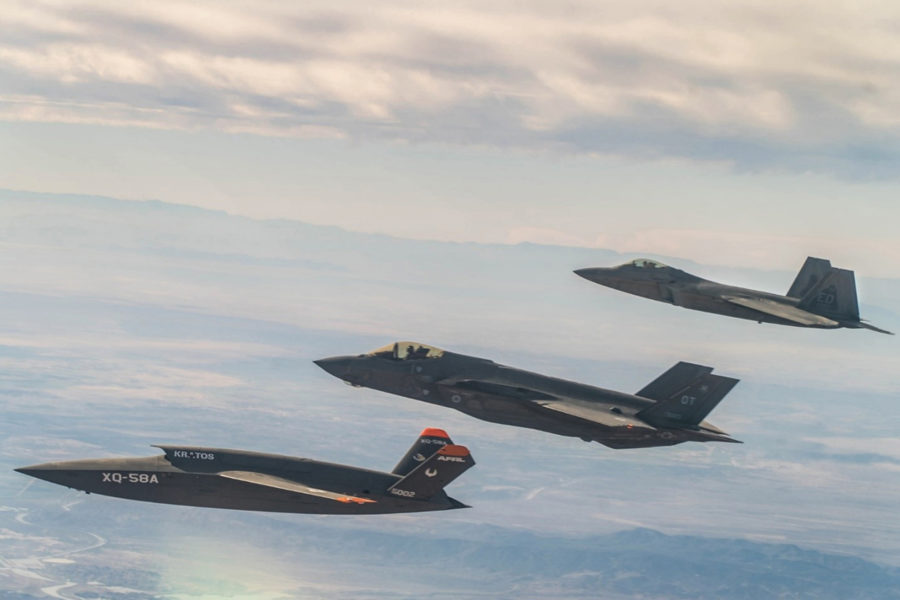FARNBOROUGH, UNITED KINGDOM—A pair of XQ-58 Valkyrie drones completed a series of tests for the Air Force’s Skyborg program, an artificial intelligence-enabled autonomous system to control uncrewed aircraft in a future manned/unmanned aircraft teaming concept.
Defense contractor Kratos, which manufactures the Valkyrie, announced the successful tests but offered no details on what those tests demonstrated or when they occurred.
They do, however, mark a milestone for Skyborg’s testing. The Autonomous Core System, the “brain” of the system, flew for the first time in April 2021 on a Kratos UTAP-22 Mako air vehicle. The next month, it flew on a General Atomics MQ-20 Avenger. The XQ-58, meanwhile, has conducted a limited number of flight tests—six as of April 2021—showcasing some of its capabilities including releasing another drone in flight and carrying technology allowing an F-35 and F-22 to share data in-flight.
This marks the first public announcement of the Valkyrie flying for the Skyborg program. The drone was first developed as part of the Air Force Research Laboratory’s Low Cost Attritable Aircraft Technology portfolio and flew its first several tests before Kratos was selected in late 2020 as one of three companies to conduct Skyborg flights.
“It’s been a stepping stone type of project. You start small, and you keep growing and adding and adding capabilities to the flights,” Jeffrey Herro, a senior vice president in Kratos’ unmanned systems division, said in an interview with Air Force Magazine at the Farnborough International Airshow. “And this is like every other test program—it’s exactly what you do. In our business, we call it crawl, walk, run.
“And that’s what the Skyborg program has been doing. … This is a program about autonomy, really. That’s what the program is. So, how can I take these autonomy systems and evaluate them and then implement them on an unmanned aircraft? And it just so happened that our aircraft was chosen to be the testbed for these autonomy tests. And so we’ve been flying various payloads in support of the government’s activities on Skyborg.”
Herro declined to share any more details on the flight tests or what he believes they mean for the future of Skyborg, but he did say the program has acted as a “proof of concept” for the Air Force as the service pushes forward with its efforts to develop uncrewed, autonomous aircraft to fly alongside fighters and bombers—efforts that Air Force Secretary Kendall has included among his top priorities.
“I think it’s been a very important program for them,” Herro said. “I think that has been informative, so they’ll use it to inform certain decisions on how they can take this autonomy they’ve been working on … and employ it either on our aircraft or other aircrafts.”
Regardless, though, Herro expressed hope that the XQ-58 would advance to become its own program of record within the Air Force. While the drone has become associated with the Skyborg program, it was originally intended simply to be a capable, reusable drone whose cost would make its loss in combat permissible. That objective dovetailed with some of Skyborg’s goals, but Herro said it can be useful in other ways.
“There are other activities going on with the Valkyrie system right now,” Herro said. “We’re very happy with the performance of it. The performance on these last flights … was very good. We’re really happy with that. And we’re continuing to evolve other capabilities for other platforms. … Because at the end of the day, we’re building an airplane. And we’ve presented this airplane as a multi-mission-capable system.”

